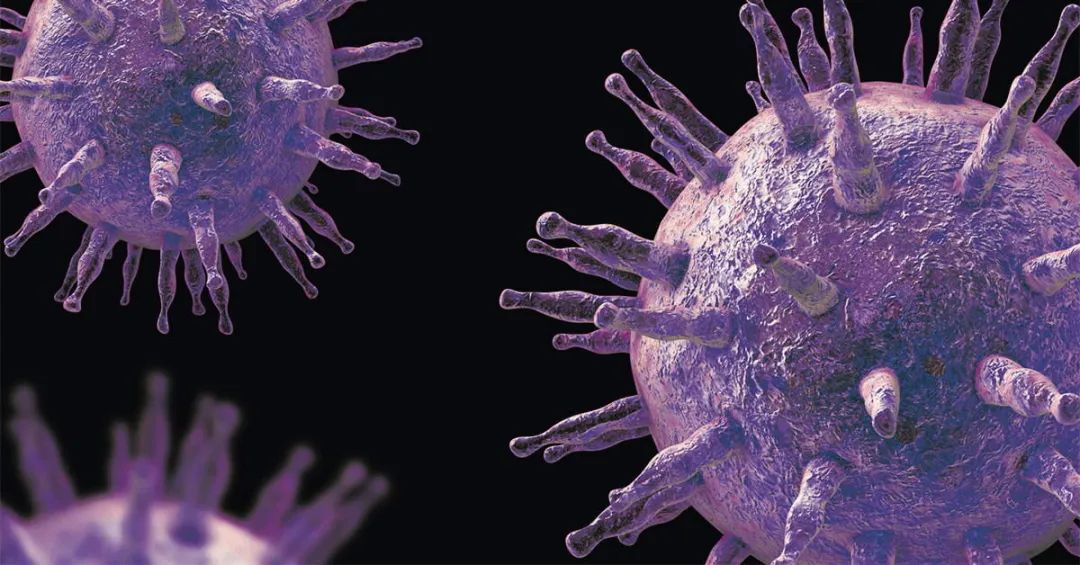Nature: This virus, which lurks in 90% people, causes chromosome breakage and promotes cancer.
Original biological world biological world

Written by Cong Wang
Edit Wang Duoyu
Typesetting and writing in water
Epstein-Barr virus (EBV) is one of the most common viruses in the world. EBV is easily transmitted through body fluids (mainly saliva), such as kissing and sharing drinks or tableware. According to statistics, 90%-95% people around the world have been infected, usually in childhood.
EBV infection can cause infectious mononucleosis or similar diseases, but it usually has no symptoms. Most EBV infection symptoms are mild and will disappear, but these viruses will persist and lurk in the body, and will be reactivated. In recent years, some studies have shown that long-term latent EBV virus is related to some chronic inflammation and various cancers, and some studies have found that EBV may be the pathogenic factor of multiple sclerosis (MS).
On April 12th, 2023, the team of Professor Don Cleveland from the University of California, San Diego published a research paper entitled Chromosomal Fragile Site Breakage by EBV-Encoded EBNA 1 at clustered repeats in Nature.
This study describes for the first time how Epstein-Barr virus (EBV) uses the fragile sites in the human genome to cause chromosome breakage, cause cancer, and reduce the human body’s ability to suppress cancer.

There are fragile sites in everyone’s genome, and these specific chromosome regions are more prone to mutation, breakage or deletion during DNA replication. These changes may be related to disorders and diseases, which may lead to genetic diseases and cancer.

Professor Don Cleveland
Professor Don Cleveland, the correspondent of the paper, said that this study revealed how EBV induced the breakage of human chromosome 11 and caused a series of genomic instability, which may activate the oncogene that causes leukemia and inactivate the main tumor suppressor gene. This also proves for the first time how to selectively induce the breakage of fragile DNA sites.
In this latest study, the research team focused on EBNA1 protein, a viral protein that persists in human cells infected with EBV. Previous studies have shown that EBNA1 will bind to a specific genome sequence at the beginning of EBV genome replication. This study found that EBNA1 also combined with a cluster of EBV-like sequences at a fragile site of human chromosome 11, where the increase of protein abundance would lead to chromosome breakage.

Previous studies have shown that EBNA1 can inhibit p53 gene, and p53, known as the "genome guardian", plays a key role in controlling cell division and cell death. Under normal circumstances, p53 can inhibit the occurrence and development of tumors, while mutant p53 is related to the growth of cancer cells.
The research team also examined the genome-wide sequencing data of 2,439 cancers of 38 cancer types from the genome-wide pan-cancer analysis project. They found that tumors with EBV infection showed higher levels of chromosome 11 abnormalities, especially head and neck cancer cases.

Julia Su Zhou Li
Julia Su Zhou Li, the first author of the paper and a postdoctoral fellow, said that for a virus that is ubiquitous and harmless to most people, it is still an ongoing effort to identify high-risk groups susceptible to latent infection-related diseases. This study shows that the susceptibility to EBNA1-induced chromosome 11 breakage depends on the control of the level of EBNA1 protein produced in latent infection and the genetic variation of the number of EBV-like sequences on chromosome 11 in each individual. Looking ahead, this discovery paves the way for screening the risk factors for the development of diseases related to EBV infection. In addition, blocking the combination of EBNA1 and EBV-like sequence on chromosome 11 can be used to prevent the development of EBV-related diseases.
Paper link:
https://www.nature.com/articles/s41586-023-05923-x
Read the original text